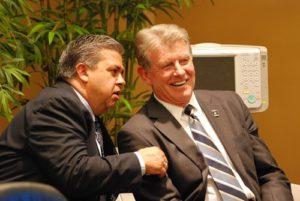News from the frontlines of the education reform war!
News! Dateline April 21, 2014: Resistance to Common Core Mounts!
Criticism comes from the right and left, “from tea partyers to union leaders” but, meanwhile, “high-profile friends of the common core are manning the barricades to defend the standards against the ongoing pushback and open new fronts in the battle for public attention.”
So as we united for a cause…. more breaking news…
News! Dateline June 10,2014: Judge Rejects Teacher Tenure in California!
The result we should all be concerned about is the expectation for “the case to generate more like it in cities and states around the country.”
Ten days later, we have something other than Common Core for people to talk about and it just happens to be a hot button, extremely divisive topic that has ordinary citizens turning into vial-mouthed lunatics spewing hatred at each other on social media.
The media set the stage for battle; anti-teacher’s union crowd versus pro-union.
Where does that leave those of us that want to see improvement in teaching conditions and learning climates? …
The think tank groups and policy experts like Marc Tucker think, “War appears to be imminent.”
Tucker needs to get out more. The union versus anti-union fight has been billed as part of education reform for years! The “well funded coalition” has continued their work in a style that can only be bought.
How unions got to be “the single most important obstacle to real education reform,” I confess, I do not know … and I have written extensively about the problems in public schools, experienced numerous issues both firsthand as a student and secondhand as a parent, searched the research and country for solutions, and did my best to put the problems into the context of solutions in my writing. But this one escaped me. In all the years that I tried to improve my local schools, it was never a union standing in my way. Nor were they helpful, but, they were not the barriers to improvement that I encountered.
Update 7/23/19: I do know how unions became the target of the political ed reform charlatans —Lamar Alexander created the campaign.
A RIDDLE IN A PLAID SHIRT by David Jackson, CHICAGO TRIBUNE 3/9/96
Meanwhile, and for a very, very long time, the majority opinion – documented by public opinion poll after poll – is that improving teacher education should be the highest priority when it comes to school improvement…It is the long ignored national priority. Why don’t we focus on it?
Enter: The law of political diversion!
Will we let ourselves be fooled again? Distracted and divided?













